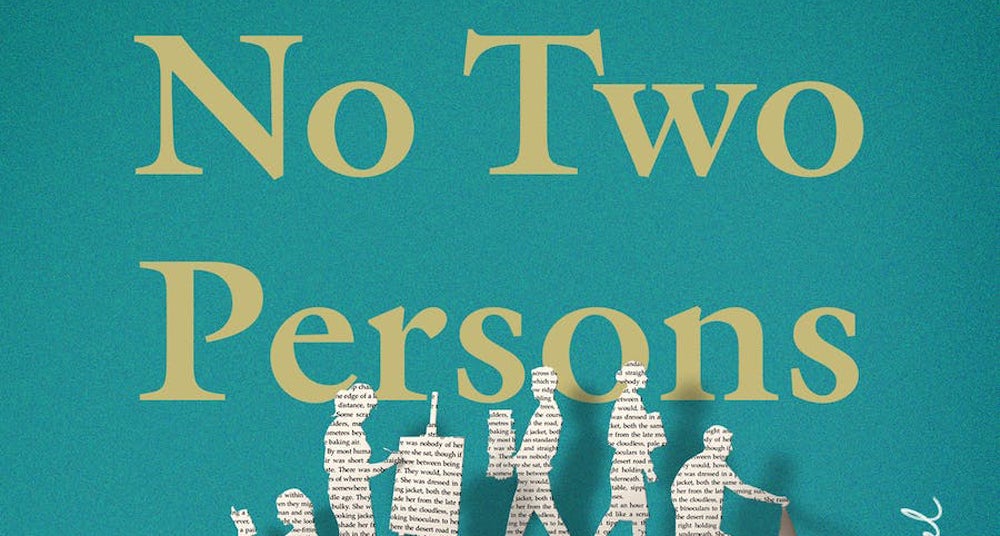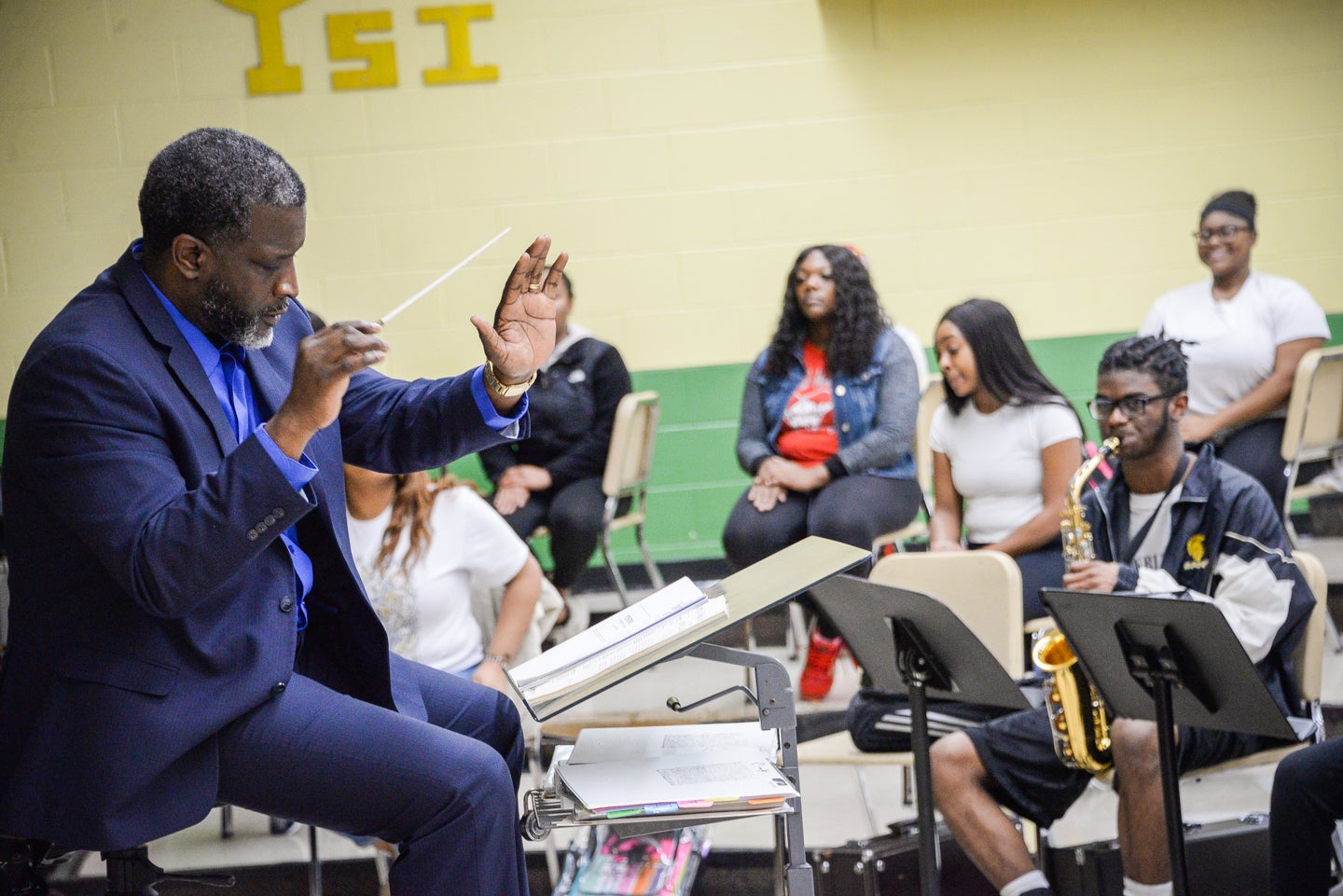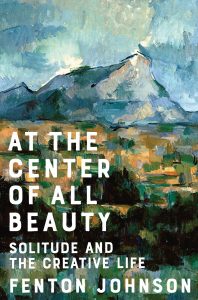
“At the Center of All Beauty: Solitude and the Creative Life” by Fenton Johnson
Go to any bookshop and you’ll find numerous books on how to have a good personal relationship with a partner, spouse or children. Restaurants are arranged to accommodate couples and families, but the lone diner must sit at the bar. Even the food chains cater to large families with packaging for 12 servings.
In a time of social distancing and self-quarantining, we have all felt the strangeness of being alone, walking down empty streets, and listening to the silence of our own thoughts. But who instructs us on how to best live in solitude? Fenton Johnson examines those who “sit alone writing, painting, or reading, or watching the changing light.”
Early in life, Johnson realized there were enough nieces and nephews to carry his families’ genetic material forward, and that he would remain childless and serve others as a teacher and writer. In this collection of essays, part memoir, Johnson researches others that embraced aloneness. Raised in Kentucky near the Abbey of Gethsemane, Johnson mentions that his parents and the monks were his first role models. He was familiar with the monk and mystic, Thomas Merton, who coined the term “solitaries,” those who choose not to be “single” but solitary.
Johnson begins with an examination of Thoreau’s life, suggesting that it only requires us to pull out our ear buds and turn off our camera phones and listen to the sounds that the universe provides. Thoreau wrote a prose oratorio in praise of silence even though he enjoyed many evenings dining with friends in Concord. Thoreau stated, “if a man loses pace with his companions, perhaps it is because he hears a different drummer.” Thoreau lived a life similar to the monks, but instead of angels, Thoreau had birds and for his visions of God, Thoreau had the pine trees and rocks.
Another of the solitaries that Johnson examined was the painter Paul Cézanne. He says that even though Cézanne’s life was characterized by deep, intense friendships he lived apart from his family and devoted himself to his true love, painting.
The poems by another solitary, Emily Dickinson, suggest that she longed for friendship:
This is my letter to the World
That never wrote to Me
Through her writing, Dickinson comes to find that solitude is not the enemy but a great teacher. Her poetry becomes alive and answers the joy of the universe:
Spring is a happiness
So beautiful
So unique
So unexpected.
So just what would our world be without solitude? Imagine the world without the poems of Emily Dickinson, or the paintings of Cézanne, or a rhapsody by Gershwin. Making the time to connect with our passions can change everything. This lesson could be one of the positive teachings from this viral chaos.
Johnson teaches at the University of Arizona and Spalding University in Louisville. He is a contributor to “Harper’s Magazine” and has been featured on the radio program “Fresh Air.”
“At the Center of All Beauty” will resonate with solitaries and with anyone who might wish to carve out more space for solitude.
“In the silence of my solitary walks I hear the voices of the trees. I hear them singing of a solitude that admits no loneliness.”
— Review by Lizz Taylor, Poor Richard’s Books
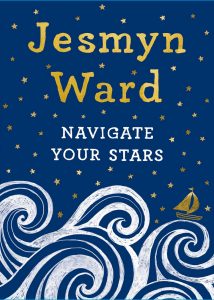
“Navigate Your Stars” by Jesmyn Ward
Several years ago, novelist Jesmyn Ward had a New York Times bestseller “Sing, Unburied, Sing.” This was a coming of age story set in Mississippi with hints of Homer’s “The Odyssey.”
When asked to speak at Tulane University graduation, Ward outlined her path towards her dreams of success. Her grandmother was a major figure in her childhood. The grandmother that had to quit school at age 13 because there was no high school education for rural African Americans in Mississippi. She worked numerous odd jobs while raising a family. She was determined that her children would have different lives and that would begin with a high school diploma. But her kids had the same hard life as she did, and they left school before graduation. They scrubbed floors and served guests at lavish parties of the wealthy.
Ward noticed that her aunts and uncles drifted from job to job, had substance abuse issues and lived paycheck to paycheck. Ward speculates that their downfall was leaving school. If she could make better decisions in her youth that might prevent her from falling victim to the same hardships. She worked diligently during school determined to attend a good university. Ward’s grandmother would come home after working a 10 hour shift in the factory and whisper her prayer to her granddaughter, “You will go to college.” As Ward aged, maturity brings an understanding that it wasn’t necessarily the shortcomings of her family that kept them from success, but the reality of their circumstances. “Should I go to school or should I work? Should I eat or should I starve?”
After graduation, Ward, an English major, was lost searching for a career path. But she was determined to change her circumstances. She realized that getting a degree is not the end, but the beginning of finding the way to a meaningful life. She spent several years reading the words of others before she returned to her words written in her youth. Revising her stories, she pursued an MFA in Writing. She mentioned that education is not “one choice, but a lifetime’s undertaking.” She kept her promise to herself to read, to write, to revise and to seek the guidance of others. She persisted.
But she also suggests that patience is required. “Take a step that will lead you toward the realization of your dream, and then take another, and another, and another.”
Gina Triplett illustrated this book with the theme of a sailboat navigating stormy as well as calm seas. This would make a wonderful graduation gift with the message that you have only reached the beginning.
— Review by Lizz Taylor, Poor Richard’s Books
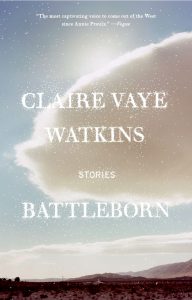
“Battleborn” by Claire Vaye Watkins
NPR Best Short Story Collection of 2012
This collection of 10 short stories garnered several literary prizes for author Claire Vaye Watkins and earned her high praise from more than one prominent newspaper book reviewer.
Watkins uses the American West as the backdrop for her debut, and most of the stories are contemporary with the exception of one, which takes place during the 1849 Gold Rush. There is something freeing about idea of the West and its wide open spaces, but at the same time, there is a sense of loneliness that comes with it. And that’s what you find in Watkin’s characters — lonely people trying to reach out and make connections with others.
Hard hitting and honest, the first story in this collection, “Ghosts, Cowboys,” deals with Watkin’s father who was a member of the Charles Manson gang and ended up testifying against him.
A strong debut, though some stories better than others, but all-in-all a beautiful collection.
— Reviewed by the Paul Sawyier Public Library
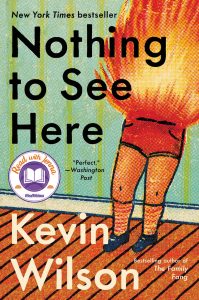
“Nothing To See Here” by Kevin Wilson
“A peculiar, entertaining and insightful book about the hazards of child-rearing and the value of friends.” — People
Lilian and Madison were the unlikeliest of school roommates and developed an uneasy friendship until Lilian left school unexpectedly. Years later, Madison writes Lilian and asks for help with her twin stepchildren, requesting that Lilian consider becoming their “governess.” But, there’s a catch. The children will spontaneously combust when they get agitated, and flames ignite their skin without harming them. Okay, got your attention now? Lilian, thinking Madison is pranking her, is up for a challenge, accepts the request and just like that moves in with the children. As she wins their trust and affection they become a quasi-family.
Wilson tells this story from Lilian’s point of view with witty, sarcastic and sometimes a little too salty language. This book is a nod to parents everywhere and to the difficulties that can come with raising children. The good-naturedness of this novel will get you. Recommended.
— Reviewed by the Paul Sawyier Public Library


